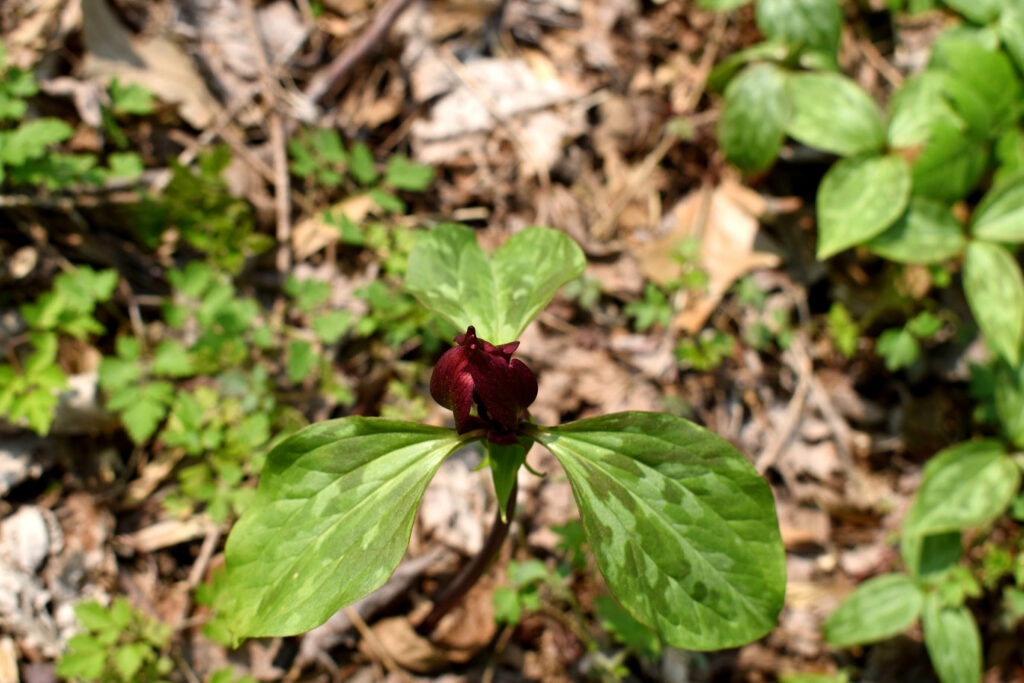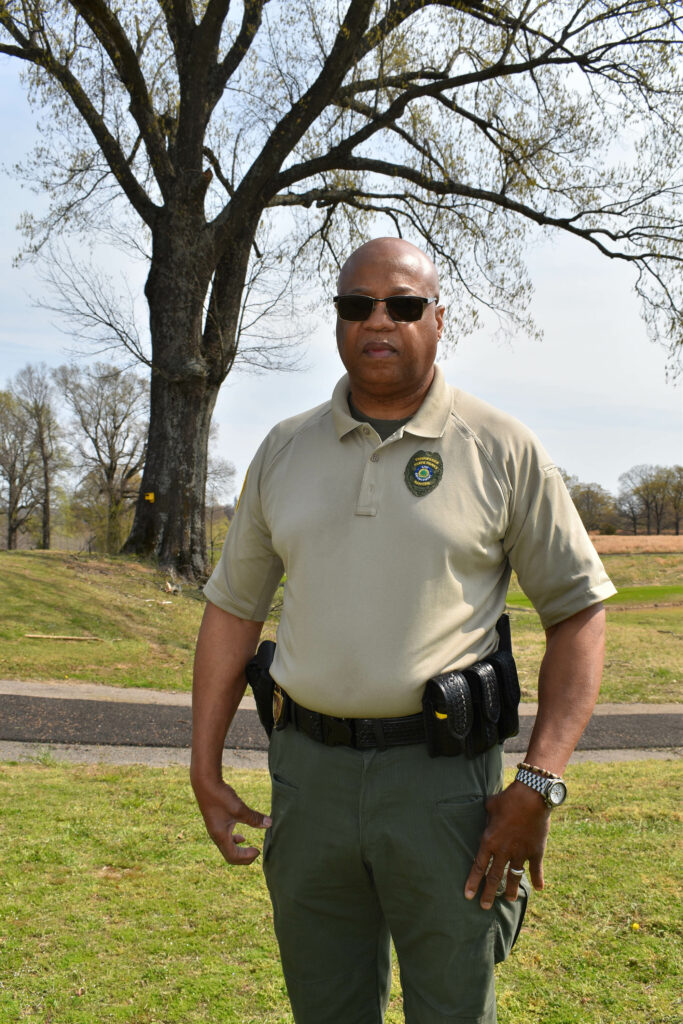T.O. Fuller State Park, the only state park within Memphis city limits, is tucked into a corner of South Memphis bordering the Mississippi River bluffs and floodplains on the West and near the Boxtown, West Junction, and Walker Homes neighborhoods on the south and east. The 1,138 acres of bluffs, wetlands, forest, and rolling hills encompass a recreation area with Olympic-sized swimming pool, splash pad, tennis and basketball courts, four picnic areas and shelters, 45 overnight camping slots, two hiking trails, an interpretive center, and Shelby Bluff Center meeting space. The location was said to be chosen for its proximity to African American neighborhoods. In addition the land was inexpensive and not conducive to agriculture.
Originally named the Shelby County Negro State Park in 1938, the Civilian Conservation Corps (CCC) began development with an original 44 person crew (approximately 130 more workers were hired locally) to create the first park for African Americans east of the Mississippi. During this time, African Americans were not welcome in other parks in Memphis owing to Jim Crow laws. During development of the park, while digging for construction of the pool in 1940, CCC workers uncovered a prehistoric Native American village of the Choctaw, now the site of the Nash Museum at Chucalissa adjacent to T.O. Fuller. In 1942 (several weeks before his death), the park was renamed for activist and educator Thomas Oscar Fuller, minister at First Colored Baptist Church in Memphis, principal of Howe Institute, later LeMoyne- Owen College, and a writer and activist.
Park Ranger Jimmy Warren became park manager in 2019 after retiring from 25 years with the Memphis Police Department. For Ranger Warren, this work was a coming home of sorts–he says he grew up in the park, spending time there on Sundays after church and after school. He visited Chucalissa, which at the time was occupied by the Choctaw tribe, on school field trips. He attended Mitchell High School with some of the Chucalissa residents. Now he is grateful to have a chance to give back to his very local community. “While I was working on community policing, and working with youth in the community, I thought if I am able at some point to give back and do some things in my community, that’s what I want to do. Being the park manager allows me to do that, work with organizations in my community that I grew up in, work with some youth from this area, and work with some of those officials and legislators who can assist us in helping the park grow.”


Some of Ranger Warren’s goals for the park include increasing patronage and interest in the history of the park and the park neighborhood, and getting more people involved in maintaining the beauty of the park. He sees these goals as a way to connect the park’s original settlers and local Black community to the natural beauty and open spaces the park provides.
Despite the setback from COVID, park activities have returned to full speed. In addition to youth activities, including teaching about ecosystems and the importance of open spaces, park staff are working to reach out to veteran groups and senior citizens. Over the past year, a community cleanup effort helped to collect 30,000 tires on the trail near the Shelby Bluff Center. The tires were then ground up, adhesive was added, and the surface was laid down as an approximately 2 miles of ADA accessible trail through what was formerly an 18-hole golf course at the park, one of the few places that African Americans could golf in Memphis.
Currently the number of visitors at the park indicates an increase of 1,000 visitors to the park compared to this time last year with a full slate of spring and summer programming including the youth fishing rodeo on June 11 and the Junior Ranger Camp also in June.
Ranger Warren’s favorite part of the park is “all of it.” “I grew up coming to T.O Fuller. My family church is on Weaver Road, which is right down the street here. My grandmother lived on Arrow Road. After church we would all gather, we could always caddy, we had a little pond behind the golf course where we could fish. We had a jukebox shelter where we would have dance contests. This place is where I grew up.” He is working to shine the spotlight for future generations on the projects, history, and natural abundance of T.O. Fuller, which is home to an occasional eagle, all kinds of songbirds, foxes, deer, turkeys, bobcats, and a striking diversity of native flowers and trees. Hiking trails range from easy to moderate. Ranger Warren says the more he ventures out in the park the more there is to discover. It’s a great time to get outside and breathe in the history of T.O. Fuller State Park.




